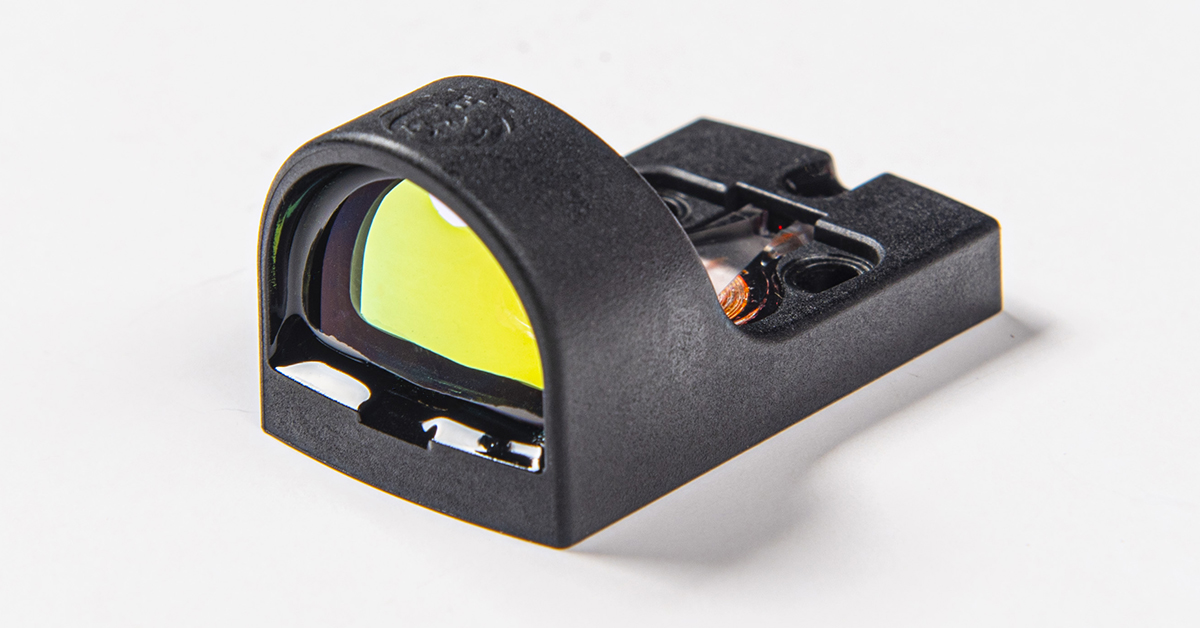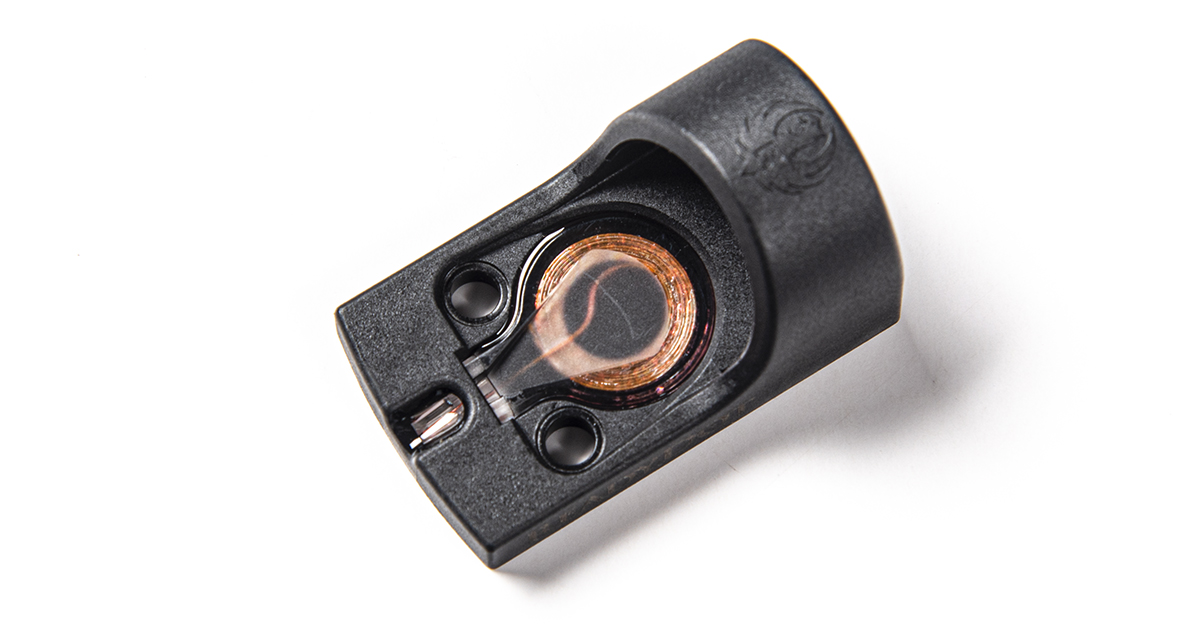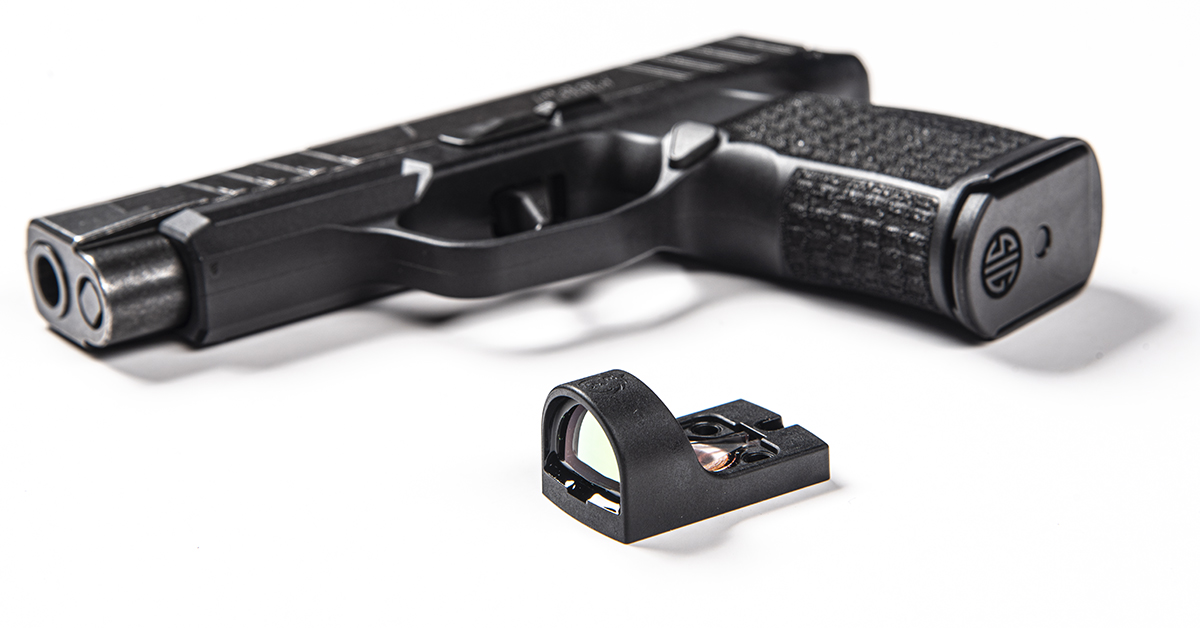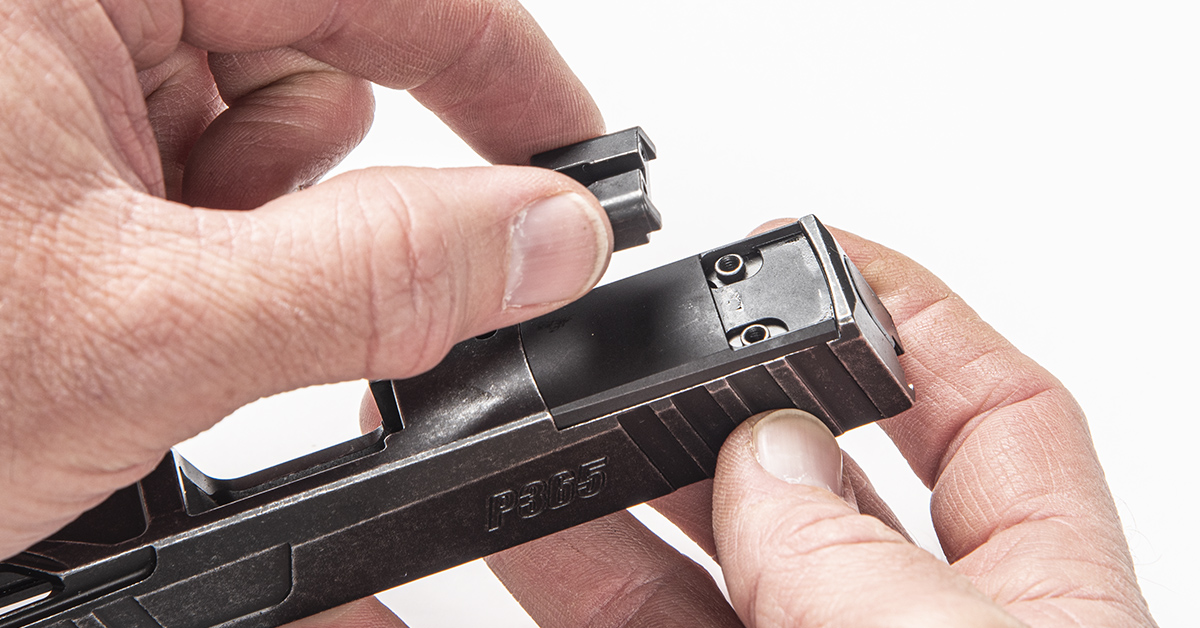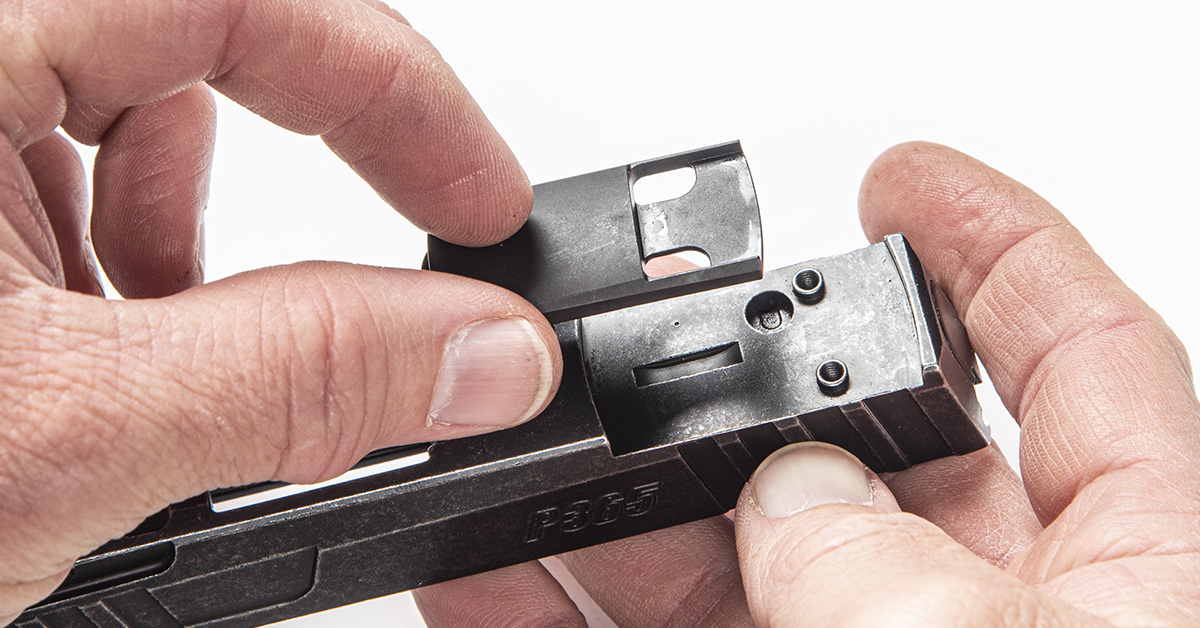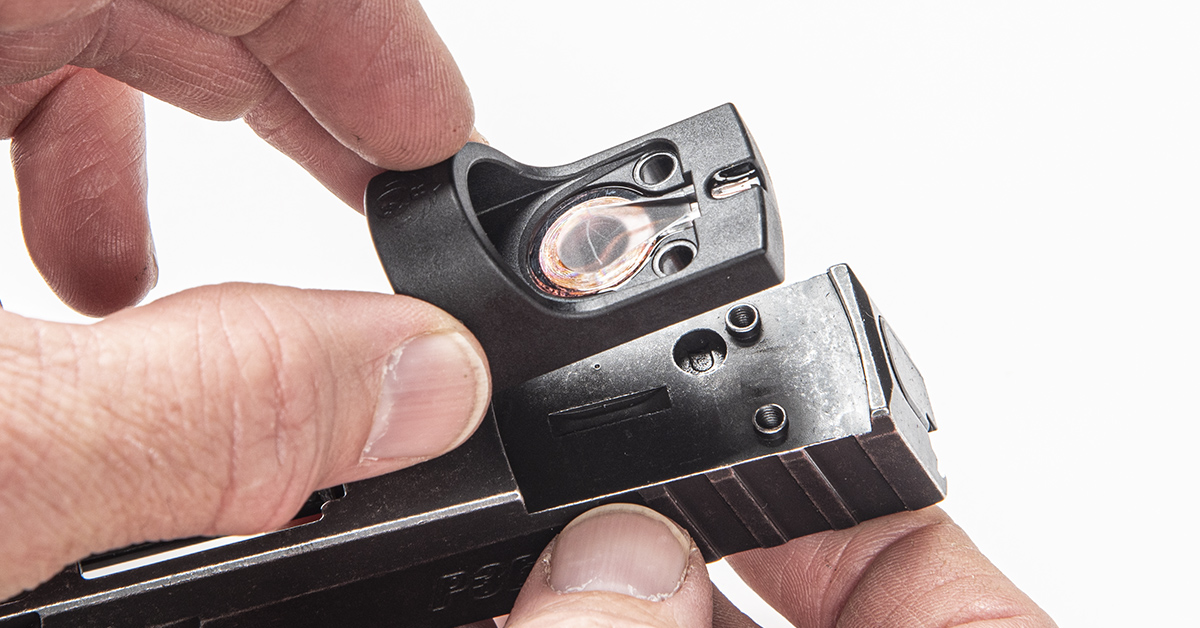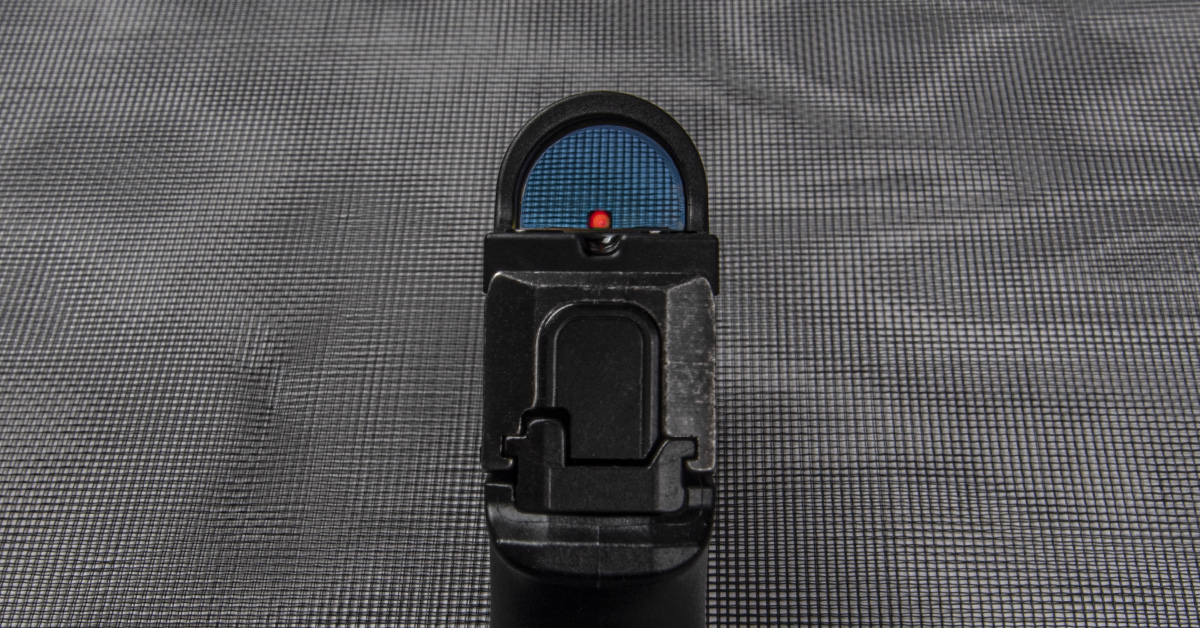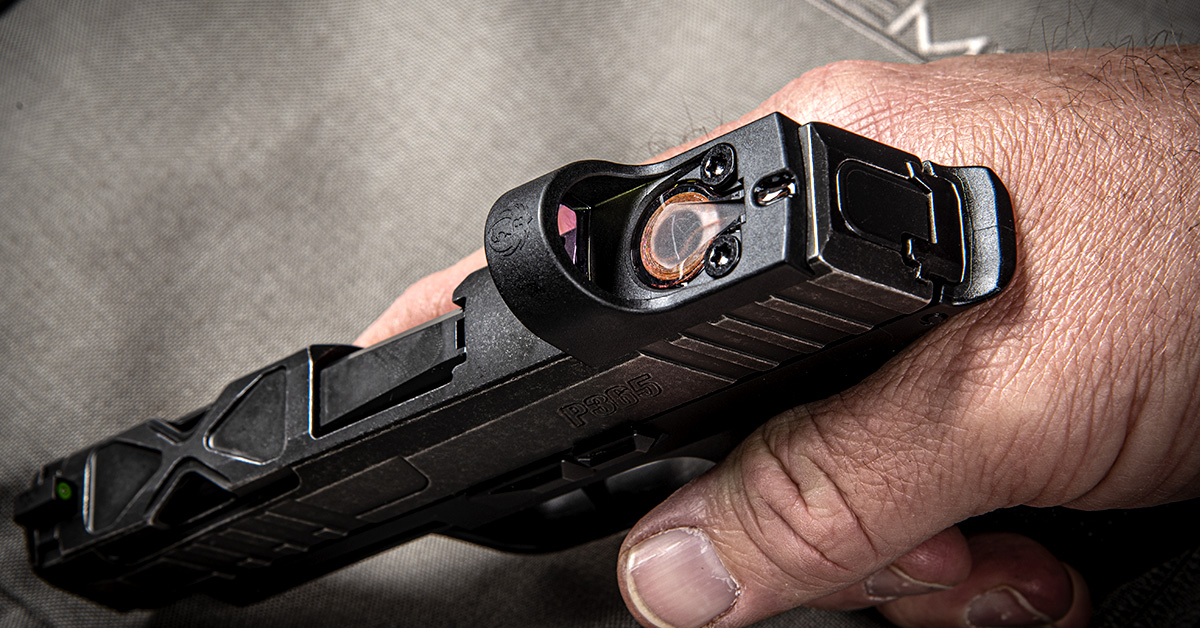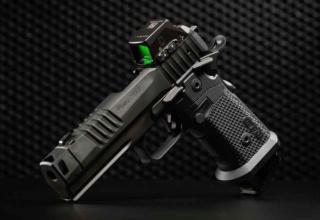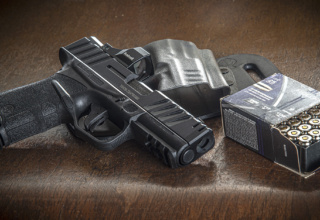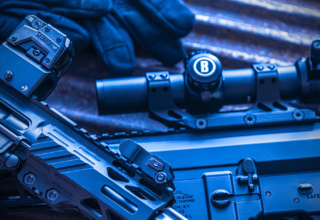A reflex sight that doesn’t run on batteries or solar power? Ruger says, “Yes!” with its new, low-profile Ready Dot.
by Rob Reaser
There is no question that red dots are “the thing” for a growing number of pistol shooters and EDC adherents. As such, there are many red dots on the market to choose from for full-size handguns to the micro-compact variety. The latter pistols, by virtue of their small size, favor a more minimalist approach in red dot optics — reflex versus enclosed emitter, diminutive lens, “always on” or “shake-to-wake” activation instead of on/off buttons, and a low profile for use with the factory open sights when backup is needed.
There are many good miniature red dots available, but as far as we know and have tested, all micro reflex red dots are battery-powered…except one.
Ruger just released the Ruger Ready Dot. It looks like a conventional micro red dot and pretty much acts like one except that it doesn’t require batteries to operate.
Instead, the Ready Dot incorporates a simple fiber optic system to gather ambient light and display it onto a 12 mm multi-layer coated lens. Since there are no batteries to maintain and no switches to turn on and off, the Ready Dot is, well, always ready. Of course, since the system requires ambient light to be gathered and reflected off the lens, the Ready Dot does not function in darkness or in low light levels.
Think of it as the crystal radio version of today’s advanced electronic red dots; it works as designed, but with limitations.
Construction, as you can see, is about as simple as it gets. The housing is black polymer fitted with an impact-resistant, optical-grade polymer lens. The fiber-optic light-gathering coil sits where the battery would be on an electronic red dot, with the output end of the coil permanently affixed in the emitter position.
Although Ruger engineered the Ready Dot for use with the company’s Max-9 micro 9mm and thus uses the Shield RMSc mounting pattern, the unit will work with most handguns that feature the RMSc footprint.
For testing, I pulled out my Sig P365 since it came from the factory with the slide cut for RMSc-pattern optics. The downside to choosing this handgun to host the Ready Dot was that I would lose the factory rear sight. That did not end up being a deal-breaker, though, as I will explain shortly.
Installing the Ready Dot onto my P365 began by removing the two screws securing the rear sight to the slide. These buggers were on TIGHT and threatened to round out the hex slots when I applied torque. Rather that risk having the screws permanently lodged in the slide because of damaged screw heads, I pooled a few drops of Kroil on them and let it work its magic for a few hours. That was enough to allow the screws to be safely backed out of the slide.
With the rear sight screws removed, the sight is freed of the slide.
Next, the slide cover was removed.
The Ready Dot dropped expertly into place with no alignment issues.
While the Ready Dot comes with two M4x0.7 8mm screws for installing the sight onto the Ruger Max-7, those screws will not fit the Sig P365 bushings. Variations in screw type, slide cuts, and adaptor plates among assorted handgun models means the Ready Dot may not work on all micro handguns even if they feature the RMSc footprint, so check with the gun manufacturer before you buy. For my P365 installation, M3x0.5×10.6 screws got the job done and the Ready Dot chassis fit perfectly into the slide cut.
Here is the non-enhanced, non-altered image of the Ready Dot. Boasting a whopping 15 MOA diameter, the red dot is big, bold, and quick to acquire. It is also crisp, with a parallax-free distance of 10 yards.
Of course, the vibrancy and visibility of the dot is wholly dependent upon the ambient light. The more light gathered by the fiber-optic, the brighter the image, and vice versa. Part of my testing included a heavily overcast day — so dark it seemed more like dusk than mid-afternoon. Still the Ready Dot made itself quite evident. Inside of the house, visibility varied considerably when transitioning between dim and well-lit rooms.
Background lighting also figures prominently in the red dot’s visibility. If you’re standing in a dark room and aiming into a lighted room, the dot is difficult to pick up. When outside, though, the red dot stands ready.
I mentioned earlier about the Ready Dot requiring me to eliminate the factory rear sight on the Sig. Given the practical effective range of this and most micro-compact pistols, and the relatively short distance of most self-defense encounters, the lack of a rear sight is not a huge drawback. The tritium dot on my factory front sight is clearly visible through the Ready Dot lens, and placing the bottom of the dot at the bottom of the Ready Dot lens corresponds to the same sight alignment as if the rear sight were present — the exception being any left or right shift. To keep that under control, the Ready Dot chassis has a ramped, U-shaped cut-out to help with sight alignment when the red dot is not visible.
The one thing I was curious about before I installed the Ready Dot was its co-witness with the factory front sight because there is no ability to make windage or elevation adjustments. As it turned out, the red dot corresponded with the factory sight just fine, so there were no issues with point-of-aim, point-of-impact performance. Will that be the case for every handgun that hosts the Ready Dot? I can’t say. But then again, we’re talking about micro-compact pistols with a typically short engagement distance.
Although the Ruger Ready Dot will not give the 24/7 aiming solution of a battery-powered red dot, it is not trying to compete with those models. This is for the shooter who prefers a hands-off, zero-maintenance, always ready red dot suitable for most situations. And with an MSRP of $99.95, this is an easy buy for anyone with a handgun featuring an RMSc optic cut slide who wants to try their hand at a red dot.

